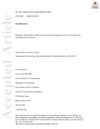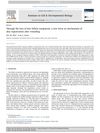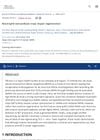After Skin Wounding, Noncoding dsRNA Coordinates Prostaglandins and WNT7b to Promote Regeneration
TLDR Double stranded RNA helps skin wounds heal by coordinating specific proteins and signaling pathways.
The study investigated the mechanisms behind Wound Induced Hair Neogenesis (WIHN) in mice and rabbits, focusing on the role of double stranded RNA (dsRNA) and its interaction with Toll like receptor 3 (TLR3). The researchers found that dsRNA is crucial for stimulating WIHN by activating the WNT/β-catenin signaling pathway, particularly through WNT7b. They demonstrated that WNT7b expression is induced by synthetic dsRNA in both mouse skin wounds and human keratinocytes. Mice lacking TLR3 and epidermal STAT3 showed reduced WNT7b expression, but this could be rescued by IL-6. The study also linked WNT7b expression to prostaglandin-endoperoxide synthase 2 (PTGS2/COX2), showing that inhibiting PTGS2 reduced WIHN and WNT7b levels, while exogenous PGE2 could rescue them. These findings highlighted TLR3-mediated damage sensing as a key coordinator of prostaglandin and Wnt levels in skin regeneration.



